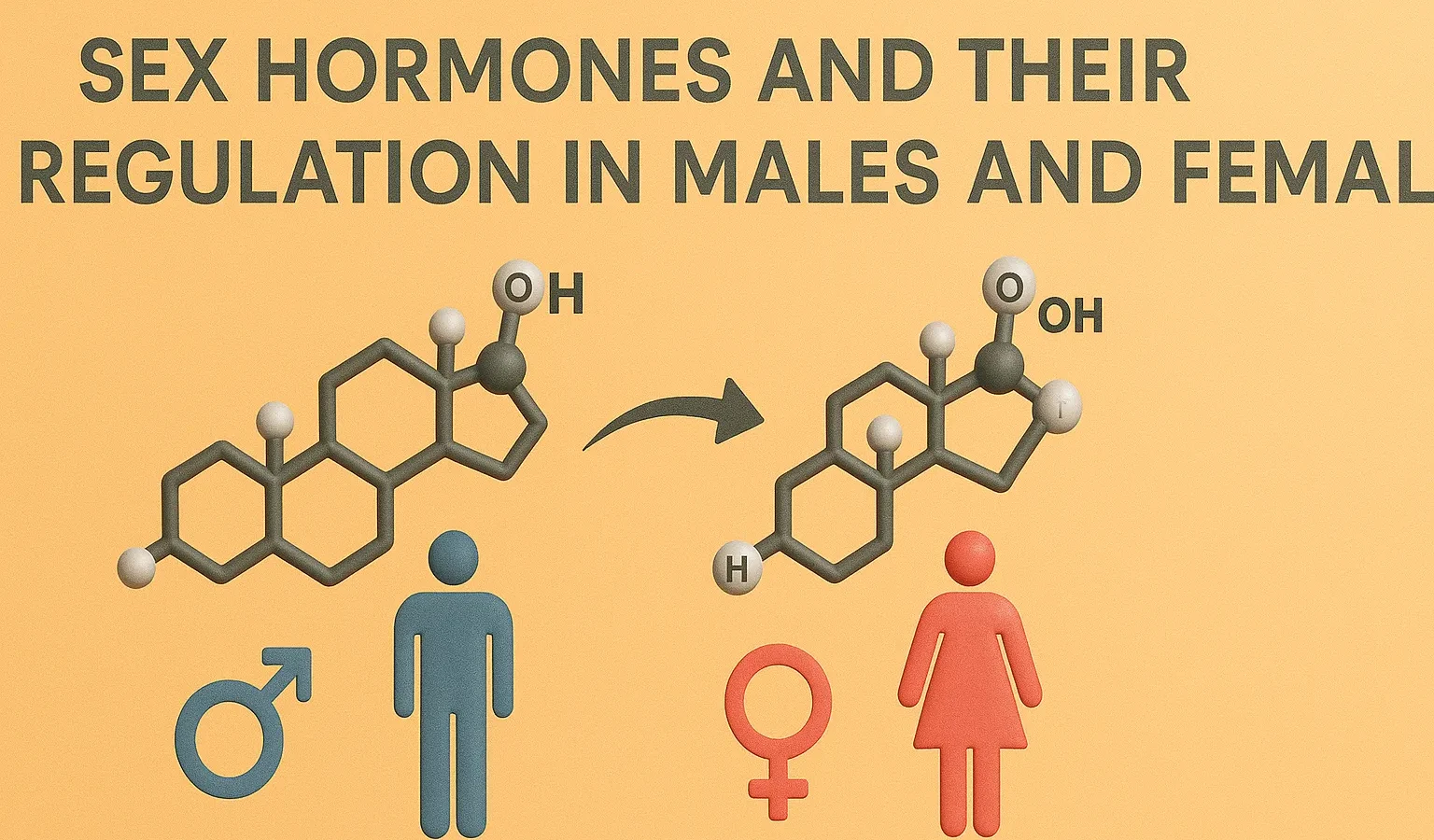Sex hormones regulate reproduction, secondary sexual traits, and fertility in both males and females.
Definition of Sex Hormones
- Sex hormones are steroid hormones that play pivotal roles in the development, maintenance, and regulation of reproductive systems and secondary sexual characteristics in both males and females.
- They influence various physiological processes, including growth, metabolism, and behavior.
Main Sex Hormones

-
In Males:
- Testosterone
- Type: Androgen
- Functions:
- Development of male reproductive tissues (e.g., testes, prostate)
- Promotion of secondary sexual characteristics (e.g., facial hair, deep voice)
- Regulation of libido, sperm production, and muscle mass
- Testosterone
-
In Females:
- Estrogens (e.g., Estradiol)
- Progesterone
- Functions:
- Preparation of the uterine lining for implantation
- Regulation of the menstrual cycle
- Maintenance of pregnancy
- Functions:
Advertisements
Regulation of Sex Hormones
- Both male and female sex hormones are regulated through the Hypothalamic-Pituitary-Gonadal (HPG) Axis, a feedback loop involving the hypothalamus, pituitary gland, and gonads (testes in males, ovaries in females).
Step-by-Step Regulation:
-
Hypothalamus:
- Secretes Gonadotropin-Releasing Hormone (GnRH) in a pulsatile manner.
-
Pituitary Gland:
- GnRH stimulates the anterior pituitary to release:
- Luteinizing Hormone (LH)
- Follicle-Stimulating Hormone (FSH)
- GnRH stimulates the anterior pituitary to release:
-
Gonads:
- In Males:
- LH stimulates the Leydig cells in testes to produce Testosterone.
- FSH acts on Sertoli cells to promote spermatogenesis.
- In Females:
- LH triggers ovulation and stimulates the corpus luteum to produce Progesterone.
- FSH stimulates follicle development and Estrogen production in the ovaries.
- In Males:
-
Feedback Mechanism:
- Testosterone, Estrogen, and Progesterone exert negative feedback on both the hypothalamus and pituitary to regulate the secretion of GnRH, LH, and FSH, maintaining hormonal balance.
Key Points in Regulation
- Negative Feedback: Elevated levels of sex hormones inhibit further release of GnRH, LH, and FSH to prevent overproduction.
- Pulsatile Release: The hypothalamus releases GnRH in pulses, which is crucial for the proper functioning of the HPG axis. Continuous release can lead to downregulation of receptors and decreased hormone levels.
- Sex-Specific Responses: Although the HPG axis functions similarly in both sexes, the specific responses and outcomes (e.g., sperm production vs. menstrual cycle regulation) differ based on the sex hormones involved.

